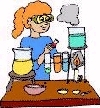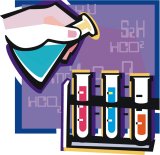
Worksheets and No Prep Teaching Resources
Reading Comprehension Worksheets
Matter

Matter
 Worksheets and No Prep Teaching Resources Reading Comprehension Worksheets Matter |
 Matter |
| edHelper's suggested reading level: | grades 5 to 8 | |
| Flesch-Kincaid grade level: | 7.97 |
|
How Chemical Reactions Happen
By Cindy Grigg |

|
 1 Chemical reactions happen around us all the time. Some happen all by themselves - like when plants use photosynthesis to chemically change energy from the sun into food. People also cause chemical reactions to happen. Cooking food and burning fuel cause chemical reactions. A chemical reaction is a process when one or more substances are changed into other substances. How do chemical reactions happen? You will need to know about atoms.
1 Chemical reactions happen around us all the time. Some happen all by themselves - like when plants use photosynthesis to chemically change energy from the sun into food. People also cause chemical reactions to happen. Cooking food and burning fuel cause chemical reactions. A chemical reaction is a process when one or more substances are changed into other substances. How do chemical reactions happen? You will need to know about atoms. |
Create Weekly Reading Books
Prepare for an entire week at once! |
| Leave your feedback on How Chemical Reactions Happen (use this link if you found an error in the story) |
 |
Matter
|
 |
Science
|